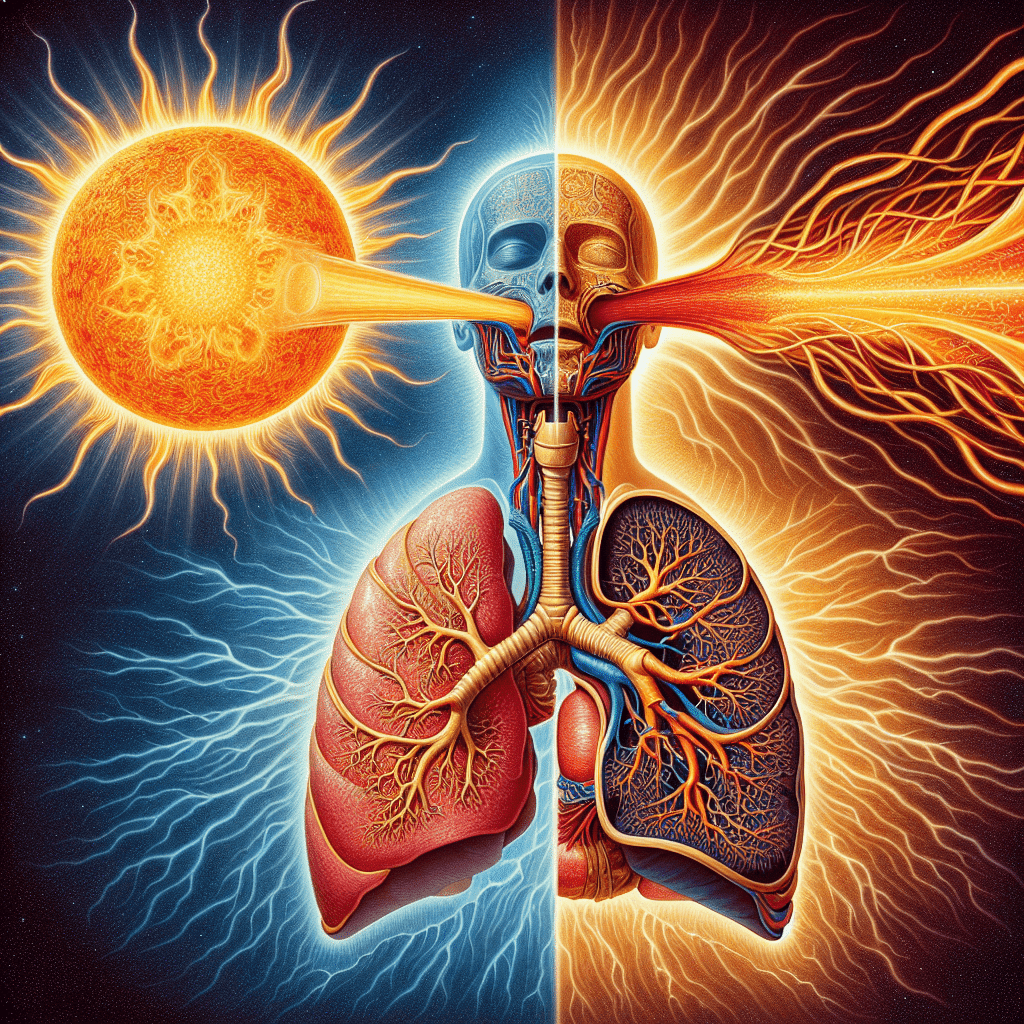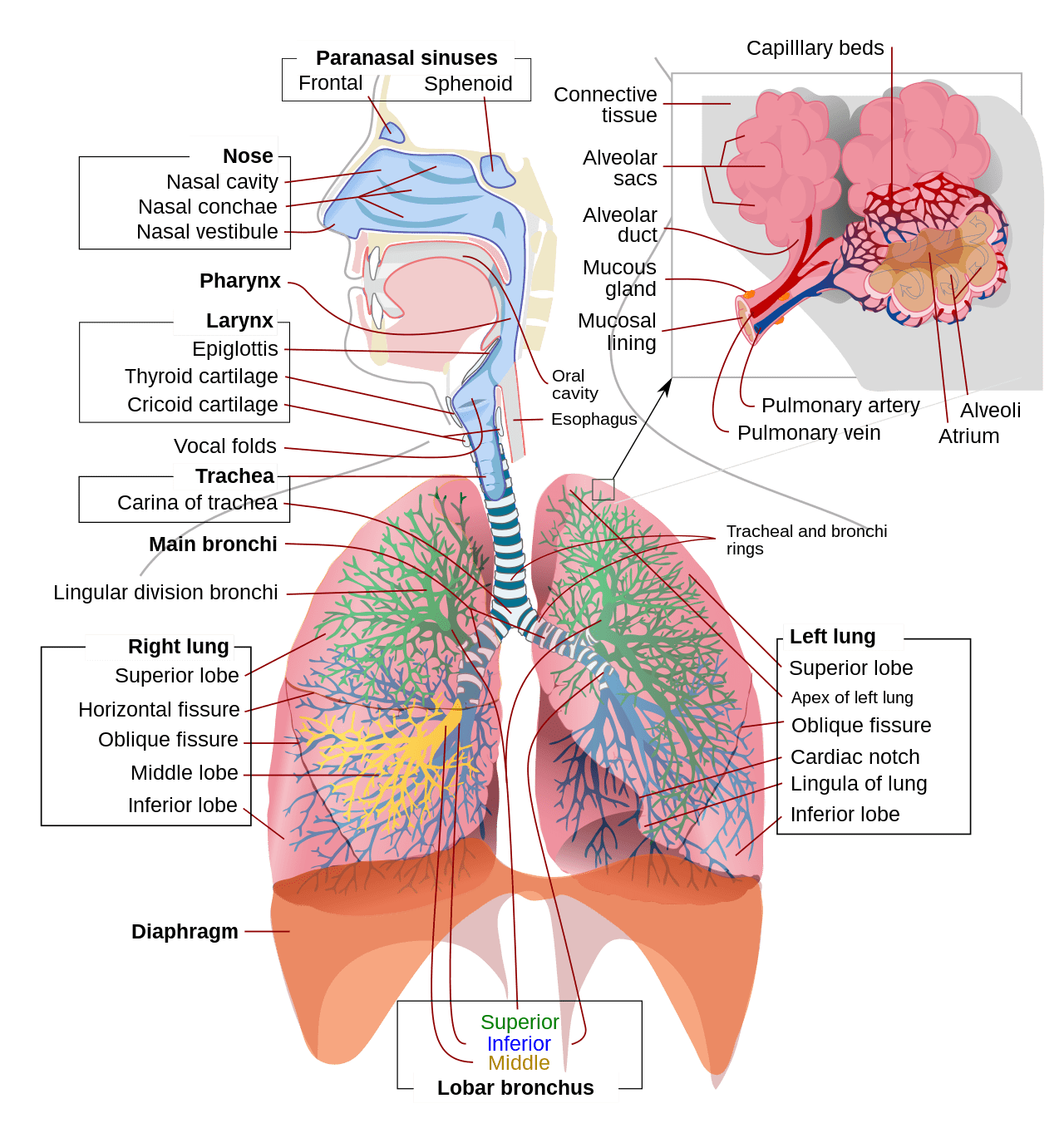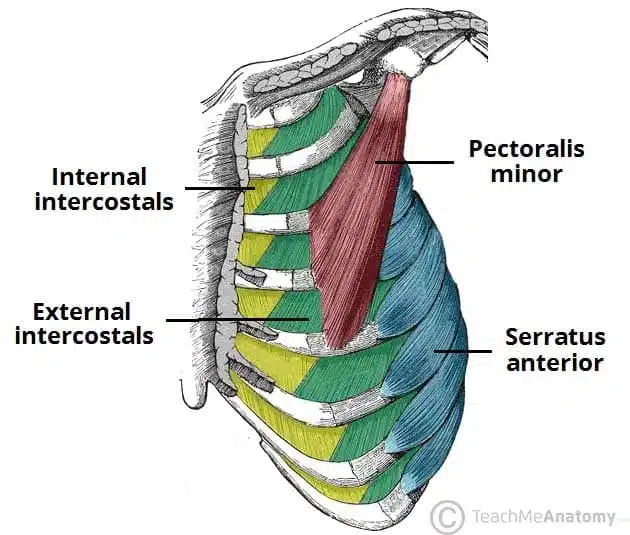The Respiratory System
Anatomy of Lungs and Respiration

There is one thing you have done every moment of your life. Even before you can remember. This will be the last thing you do before you die. And your awareness of this thing will partially determine how you exist on planet Earth. Prana, or your breath, is the primary mover on life in your body and corresponds deeply to your mental and physical health.
Humans have two lungs and five lobes, two on the left and three on the right (the right is bigger), each of which can be from 70-100 square meters in surface area, about the same surface area as a tennis court. The lungs have 2,400 kilometers of airways and 300 to 500 million alveoli which are gas exchange points for the bloodstream. These are powerful organs of exchange with the environment, with power and functioning that should not be taken for granted.
The respiratory system is a series of organs responsible for intaking oxygen from the atmosphere and expelling carbon dioxide back into the air. This basic gas exchange between the body and the atmosphere is completely dependent upon the respiratory system and almost every vertebrate animal has one. This exchange affects every other system, as they oxygenation of blood is necessary in every organ. The nervous system also seems to draw energy from the respiratory system, and the cardiovascular system takes cues from the respiratory system (both cue off brain activity) to determine how much blood it should be pumping based on breath rate. When the sympathetic nervous system becomes active (the flight or fight mechanism), heart rate is increased, respiratory rate is increased, the sensitivity of the nervous system is heightened to allow for survival, but this comes at a cost.
Yoga focuses primarily on the respiratory system’s functioning to move the muscular-skeletal system in the opposite way. In our modern world full of non-environmental stress and high levels of adrenaline in non-life threatening situations, the sympathetic nervous system is overactive and is probably the biggest contributor to the high fatality rates from cardiovascular disease (nutrition would be the other competing contributor). The respiratory system is vital to the functioning of every mammal on the planet and is one of the most intricate and powerful tools for surviving, prospering, and thriving on planet Earth.

I honestly think the vast majority of people take breathing for granted. Most Americans are in such a rush that they don’t even notice their superpower of consciousness. We don’t learn about breathing in school, or in early sports, which is really a shame because breathing concentration allow for intense amounts of focus. Every athlete should learn breath control techniques from young ages; I can remember when I learned to run with proper form at 15 and I think that learning about breathing should happen even younger. This is what keeps us all alive, after all, and we really should learn how to keep our nervous systems functioning optimally through breathing exercises.
To really understand how intricately related the nervous system and respiratory systems are, we need to go back in time to when you were born. At birth, a babies lungs are full of fluid, but once the child is released from the birth canal, the central nervous system trigger a huge change in reaction to the environment, which then triggers the first breath, about 10 seconds later. From there, the lungs develop rapidly until at about 2, the alveoli are fully developed, then the lungs begin to grow normally until full adult muscular maturity is reached. The lungs are muscular and most mammals use their musculoskeletal systems to support their breathing, as humans do. This is why yoga can alleviate many hampering disabilities having to do with lung functioning, because strengthening the accessory muscles to the diaphragm strengthens the overall functionality of the respiratory system.
The muscles of the respiratory system are the following:
- the diaphragm (primary)
- the external intercostals
- the internal intercostals (intercostals interlace on the inside and outside of the ribs).
The accessory muscles are:

- sternocleidomastoid
- scalene muscles
- serratus anterior
- major & minor pectorals
- trapezius
- latimus dorsi
- thoracic erector spinae
- iliocostalis lumborum
- quadratus lumborum
- serratus posterior, superior, and inferior
- levatorescostarum
- transversus thoracis
- subclavius
As you can see, there are a tremendous amount of accessory muscles involved in breathing. I interpret this a particular way, that there is an enormous spectrum between thriving and breathing with ease and freedom contrasted to breathing for survival, or breathing only with the diaphragm and ribs, which puts extreme amounts of stress on those muscles. I think the idea of balance between the primary and accessory muscles is the right idea, and the stronger the accessory muscles, the more powerful breathing will follow. This takes time, muscles build strength in increments, and this is probably the biggest reason why yoga is so difficult for many Americans. Because we need it the most!
Questions
- What kinds of breathing exercises do you practice for optimal health?
- What kinds of breathing exercises would you like to learn about?
- Do you find that breathing affects your mental health?
- Do you find time to meditate on your breathe during the day?
References
The Respiratory System Read More »
